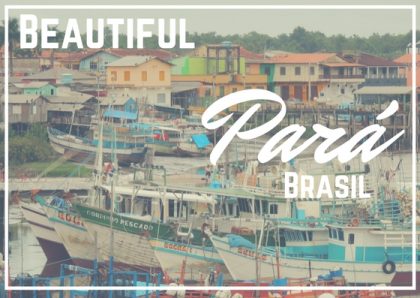
I shared in my previous post the purpose and some of the findings from our expedition to Pará, Brazil.
Here are some some additional details and images from our travels.
The team during the portion of trip in Pará
From left to right, Stephanie Feigin, Daniel Merchant, Amanda Dey, Christophe Buiden, Larry Niles, Danielle Paludo, Me, David Santos Carmem Fedrizzi, Yann Rochpault, Maximiliano Rodriguez (and the neighborhood kids).
Passage to Apeu Salvador
The keystone experience of the trip was making the voyage to a small, remote village called Apeu Salvador in a coastal extractive reserve Gurupi-Piriá
Through our colleagues who work at the Chico Mendes Insititute for Conservation Biology, we made contact with folks in the village who were willing to help us.
We hired a cargo and passenger boat to take us on the 3 hour trip from Viseau to the village.
The boat’s path threaded through narrow mangrove channels when short cuts were available and across wide, windy embayments when they weren’t.
Colorful boats of all kinds are one of the most photogenic features of the northern coast. Each region has it’s own styles.
Apeu Salvador
During past trips, our team has visited other villages like this one. They are tidy, with neatly arranged streets, small stores and usually a church at the town’s center.
Remarkably, these extremely remote places have power thanks to an initiative in Brazil more than a decade ago that aimed to bring electricity to as much of the country as possible. There are lamp posts and powerlines all leading from a generator that runs for about four hours each night.
This village had a bakery. We wondered why blaring music played in the town during the early morning hours. We learned that this was to let everyone know the bread was ready.
It is truly maritime. The houses are on stilts because high tides flood parts of the village. Pigs and goats graze in tidal vegetation. Fences are made of mangrove poles or fish nets. Even the soccer pitch was a salt flat surrounding by fishing nets (at right in the photo above).
We were invited to settle in an open-sided building that seemed to serve primarily as a party space. During the day fisherman were also using it to mend nets.
We hung more than 10 hammocks from its sagging rafters. When a hammock swayed, the building swayed.
The townfolk slowly warmed up to us over the three days we stayed, especially the kids. They realized that we were there for the birds.
A crowd of kids gathered around me one afternoon and were helping me spot birds flitting around the village. At one point they hurried away excitedly. I thought they had moved on to something else, but they returned with this pet whistling duck.
We saw numerous caged wild birds when we were traveling. One house in the village had this tropical mockingbird hanging from the eaves.
Beyond the village, it was a road trip. We moved from Belém to Bragança to Viseau to Salinopolis and back to Belém. At each city we would find a hotel and provisions. Then the team would split during the day to surrounding small ports to hire boats for shorebird surveys.
There was road food: various pastries either with sweet or savory filling.
Below is the famed Açaí palm, source of the Brazilian super fruit. We learned that is dull and strange-tasting without sugar.
We had a few celebratory meals toward the end of trip, one featuring fresh wild shrimp made into Moqueca, a Brazilian fish stew with palm oil and coconut milk.
And, courtesy of Paulo here, we had Churrasco (grilled meat), a prominent feature of Brazilian cuisine.
Here are some more snapshots from along the way.
Backyards in Viseau.
A teak plantation
Not sure what this store sells, but these are among the few words I know in Portugeuese: “high tide”.
hotel lobby in Bragança
The wares at a variety store. We were buying hammocks.
Upper class housing has a “prison” aesthetic.
The quay in Belem, this city is the gateway to the Amazon.
Stuff for the tourists. This was a part of a big market they we only had time to glimpse. We were told that all manner of strange things originating from the Amazon were for sale here.
São Benedito
I’ll end with mention of Saint Benedict the Moor. His image, big, small and VERY big, was everywhere in coastal Pará.
There were other very large religious statues, most of which I missed getting shots of from moving cars. But I did catch this sweet baby Jesus.